Anycubic Photon Mono X Review
- Setup and operation are relatively simple
- High quality prints
- Large print platform (especially at this price)
- Surprisingly quick printing speed via monochrome screen
- Works with Anycubic resin and 3rd-party resin
- SLA printing can be messy for beginners
- Software requires some fiddling for good results
The Anycubic Photon Mono X was originally released in the year 2020 with a promise of relatively large, fast, inexpensive 3D prints. This device is an SLA (liquid resin) 3D printer, made to deliver results similar to those of far more expensive 3D printers, here with only the essentials in play. Don't let that balance in favor of cost-effectiveness fool you into thinking that when it comes to high-quality prints, the Photon Mono X is anything less than great.
Setup process
Anycubic Photon Mono X works with an 8.9-inch 4K monochrome LCD screen for UV-sensitive resin printing. Combined with a sizeable arm and build plate, this machine has a total build area of 7.56 inches (L) by 4.7 inches (W) by 9.645 inches (H). Setup requires attaching the print plate, screwing in the WiFi antenna, and testing the print floor.
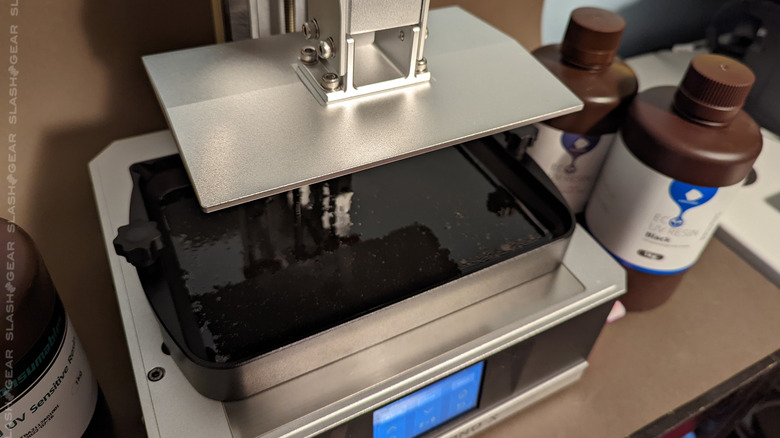
The printer is controlled by a 3.5-inch touchscreen panel at the front of the machine. This touchscreen is colorful, bright, and readable – though as it always seems to be with this sort of setup, it'd be nicer if everything were just a bit larger so that print file names could be more easily discerned. The software this machine runs is very basic and functional.
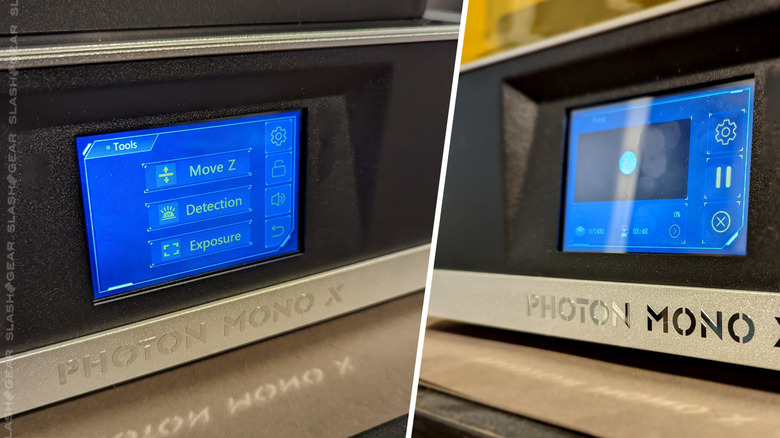
The desktop software this machine works with isn't quite as user-friendly as we'd like. Anycubic Photon Workshop is great for Anycubic users because it has all of the Anycubic machine specifications built-in by default. But automatic supports are iffy, and preparatory work is often required for complicated 3D objects before they enter the workshop app, or the app itself locks up and/or crashes.
This is a shame because once the software delivers a print file that can be printed by the 3D printer, the machine does its work with aplomb. The print speed and the print quality we've seen with this printer are among the best we've seen in an SLA 3D printer since the start of our 3D printing review journey.
Connectivity and operation
This device has a WiFi antenna for connectivity with a mobile app. The mobile app is fairly decent, though it does raise a question of functionality. If this machine is capable of showing data to a user about print progress, resin requirements, and print layers remaining, as well as allowing remote controls (stop and go and pause), as well as on-the-go adjustments of exposure, rising height, and speed, why is this same functionality not allowed in a desktop app?
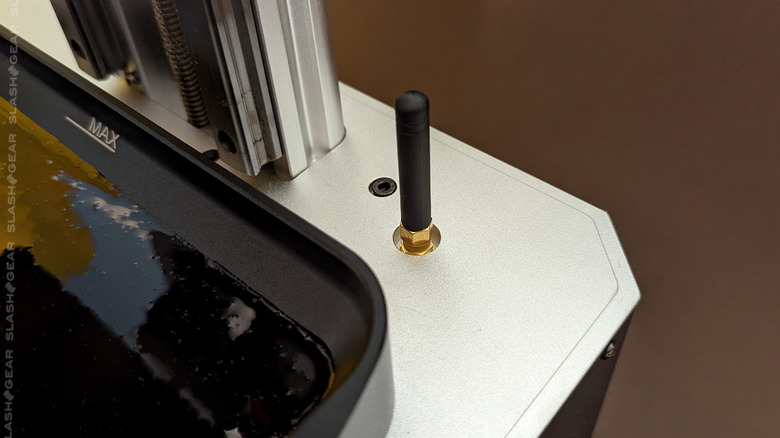
That, it would seem, remains a feature relegated to far more expensive 3D printers. For now, we still need to use a USB stick to transfer print files from a desktop machine to the printer.
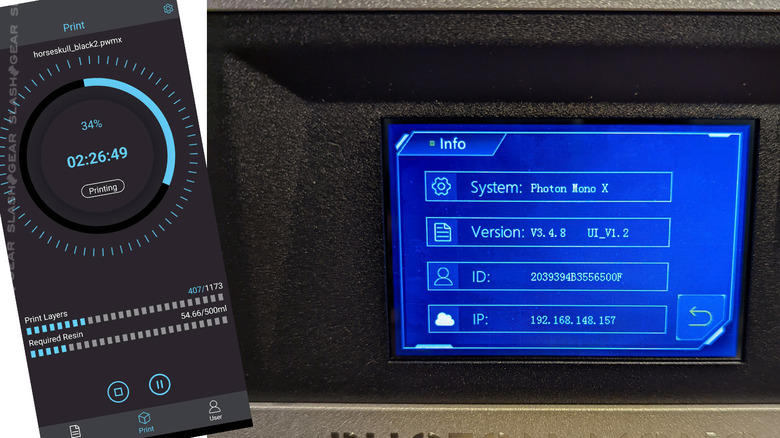
Replacing the resin vat is a messy business, but the Photon Mono X has taken some of the guesswork out of the process by including a precision-fitted space on the surface of the printer. One literally cannot place this print vat down in an incorrect position, as its fit is precise and aided by a pair of simple thumb screws.
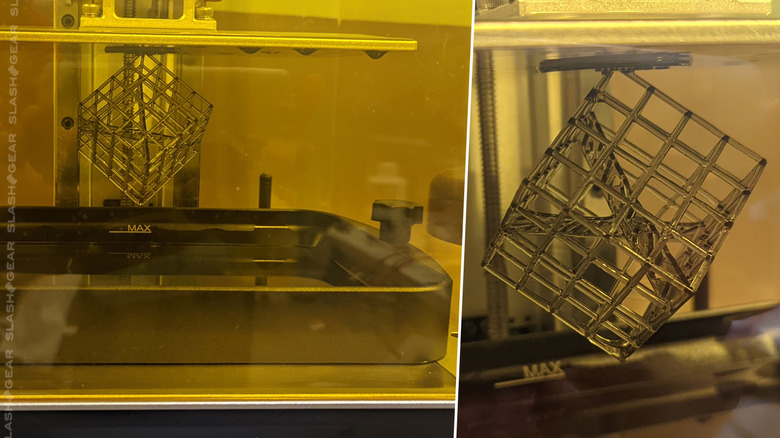
The tight fit also puts up some defense against the odd resin spill, as the material can creep over the side and under the resin tray with this sort of printer. Such a situation can destroy a 3D print, destroy the device's LCD screen, and destroy the resin tank. It's great that Anycubic has designed this resin tank to fit tight against and surrounded by the print surface.
Print quality
We've tested several different UV reactive resins in this 3D printer review, and they've all produced excellent results. As yet, we've not had a failed print due to anything other than user error.
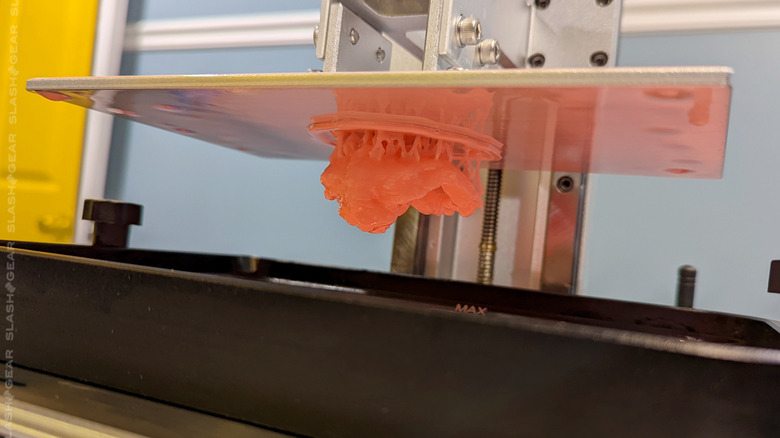
Above and below, you'll see a miniature sculpture printed in pink. This pink resin was made by Anycubic. Using this resin, the software provided by Anycubic, and the settings suggested by the company, the first print was perfect. The one change I needed to make was in the X-height of the print in the software before adding supports. This software suggests that you start with the print flat against the print bed, but at this tiny print size, we're looking for more solid supports than the two tiny flat feet on which this 3D-printed creature stands.
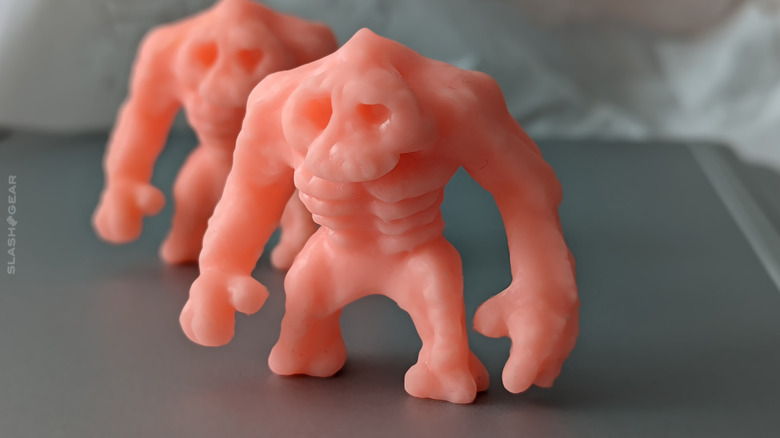
Next, you'll see a horse skull printed in two parts that look and feel like they were printed together, though they were printed in two separate runs.
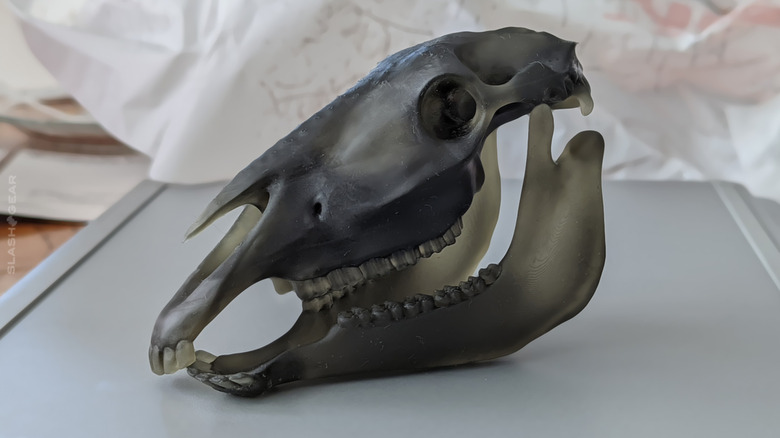
The quality and precision of the print are consistent throughout, and the final product looks and feels professional. The detail delivered by this printer is excellent. Just so long as print settings are on-point, there's little reason to doubt all the claims made by Anycubic about the capabilities of this hardware.
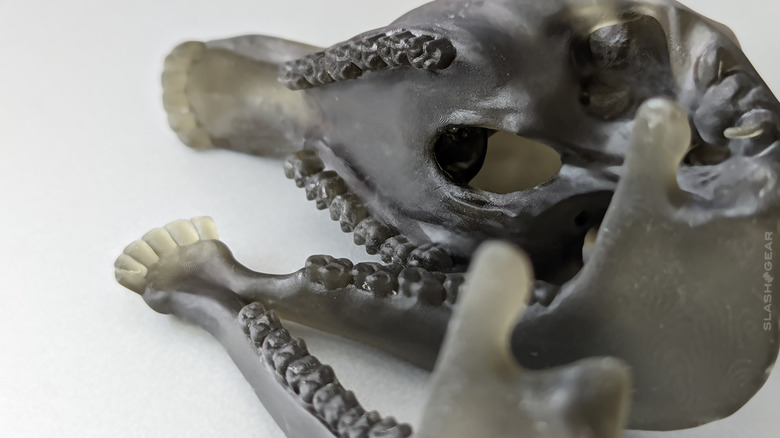
Washing and Curing
Putting prints made with this printer through an Anycubic Wash & Cure Plus machine significantly reduced post-print cleanup. One part of this machine washes off excess resin still covering the exterior of your 3D print – as shown all drippy in the photo of the pink monster still attached to the printer above. The other part of the process puts the 3D print through a bright light session so that any still-present not-quite-cured elements are made entirely solid.
The Anycubic Wash & Cure Plus – a separate purchase – is priced anywhere from $189 to $249, depending on when and where you buy it. It's one machine with two steps: One wash tank and one curing light with a rotating base. As it was with the Elegoo Mercury X Bundle (washing and curing machine), we recommend you make the curing and the cleaning a regular part of your 3D printing process if you're using an SLA (liquid resin) 3D printing process. It makes the whole adventure run smoother and produces even better results than you'd get otherwise.
Alternative 3D printers
If you want all the bells and whistles that come with the maximum potential price in a 3D printer, our Formlabs Form 3 3D printer review should be of interest to that money burning a hole in your pocket. If you're looking for a cheaper model that can easily print generously-sized objects, the Photon Mono X might just be your best bet.
If you want to see what a high quality tiny format SLA 3D printer looks like, head over to our Elegoo Mars Pro Review and take a gander. This 3D printer is every bit as good as the Anycubic machine, but with a far smaller physical size and lower price range.
Wrap-up
Anycubic Photon Mono X was inexpensive when it was first released, and it's only getting more affordable. At most, you'll pay around $759 from Anycubic's online store. That's a decent price for the Anycubic Photon Mono X given the capabilities, size, and quality of the product.
The price for 1kg of liquid UV resin is all over the place at the moment. We're talking anywhere from $18 to $35 a bottle, depending on which online store you're looking at and what sort of sales are in play. At that price, you're looking at an opportunity to buy all sorts of different colors for testing and production with little worry about your wallet disintegrating due to the massive amount of bottles you're about to buy.
